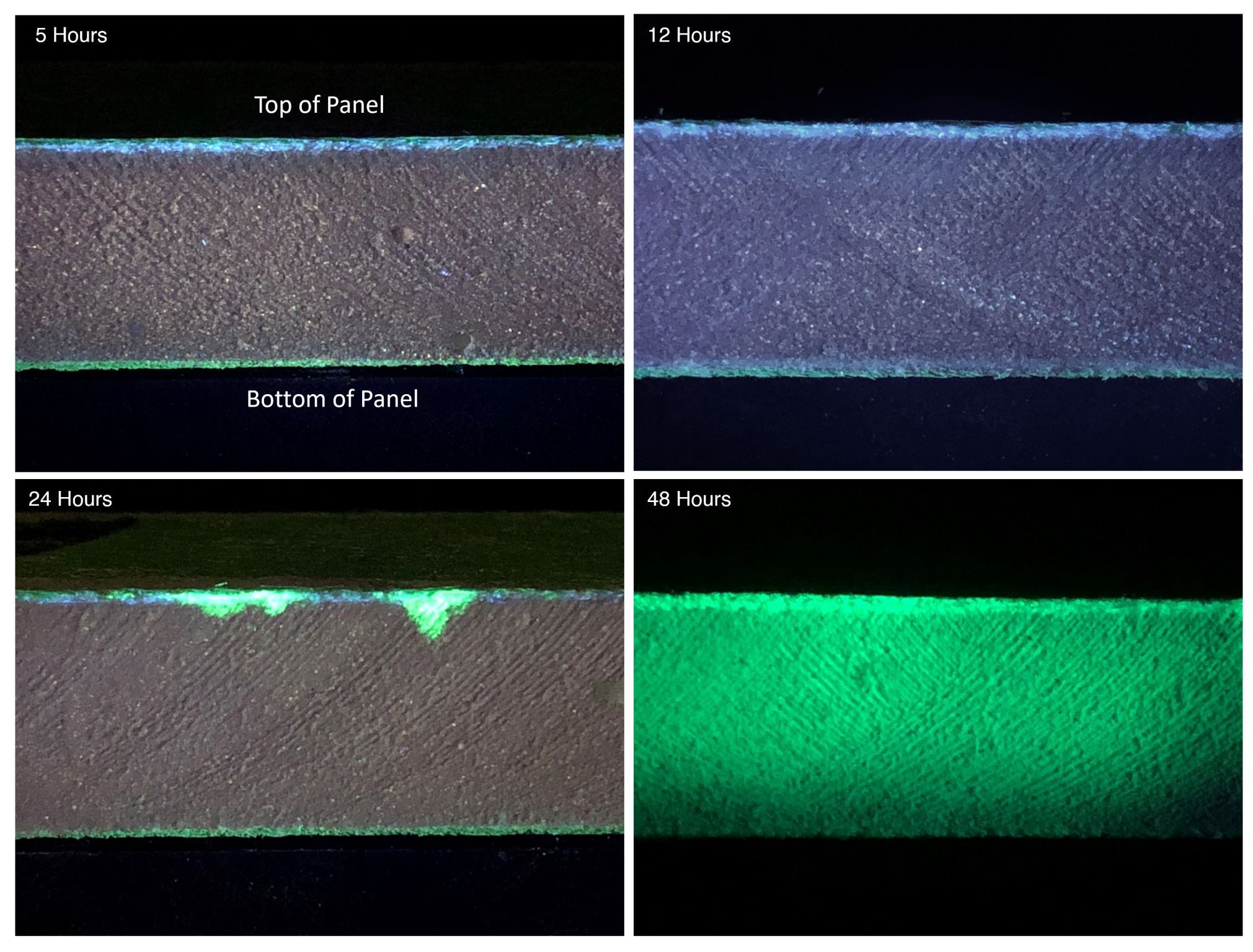Tags: #buildingdesign #buildingmaterials #buildingproducts #buildingscience #gypsum #hygroscopic #materialsscience #roguetesting #water #waterresistance

It’s the exception, not the norm, for materials to be continuous and uniform. Water and air exploit these imperfections.
Here, I show a time series of water absorption by glass-faced gypsum panels. These panels were exposed to water ponding at 0.17” over the course of 48 hours. At first (5-12 hours), it seems the facer does a fairly good job at warding off the water. Actually, the gypsum core is already wetting.
The wetting process is initiated when water is absorbed by the facer, which is discontinuous at the scale that matters. The facer also contains air – an important point as vapor diffusion is now in play within facers/air voids/gypsum interfaces. Gypsum is hygroscopic, adsorbing water vapor and absorbing bulk water until finally the gypsum becomes saturated. At this point, water migration is dominated by capillary flow through the gypsum’s greater porous matrix. We see the discontinuous nature of the facer at 24 hours. At 48 hours, the panel is nearly fully inundated.
I’ve used fluorescent dyes extensively to trace how water behaves in materials and how materials respond to it. I’m looking forward to enhancing these techniques and employing them in the study of MgO and similar materials.